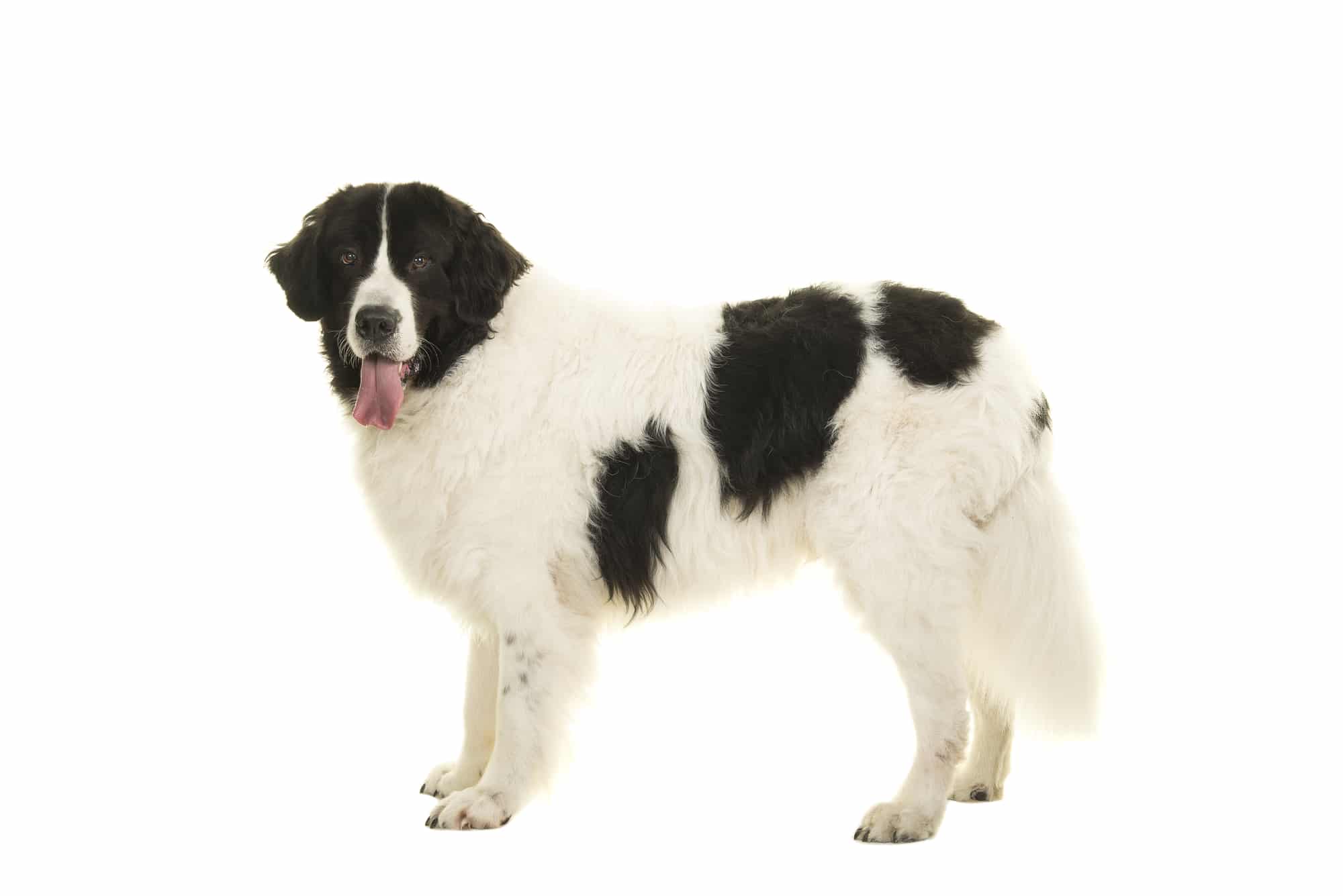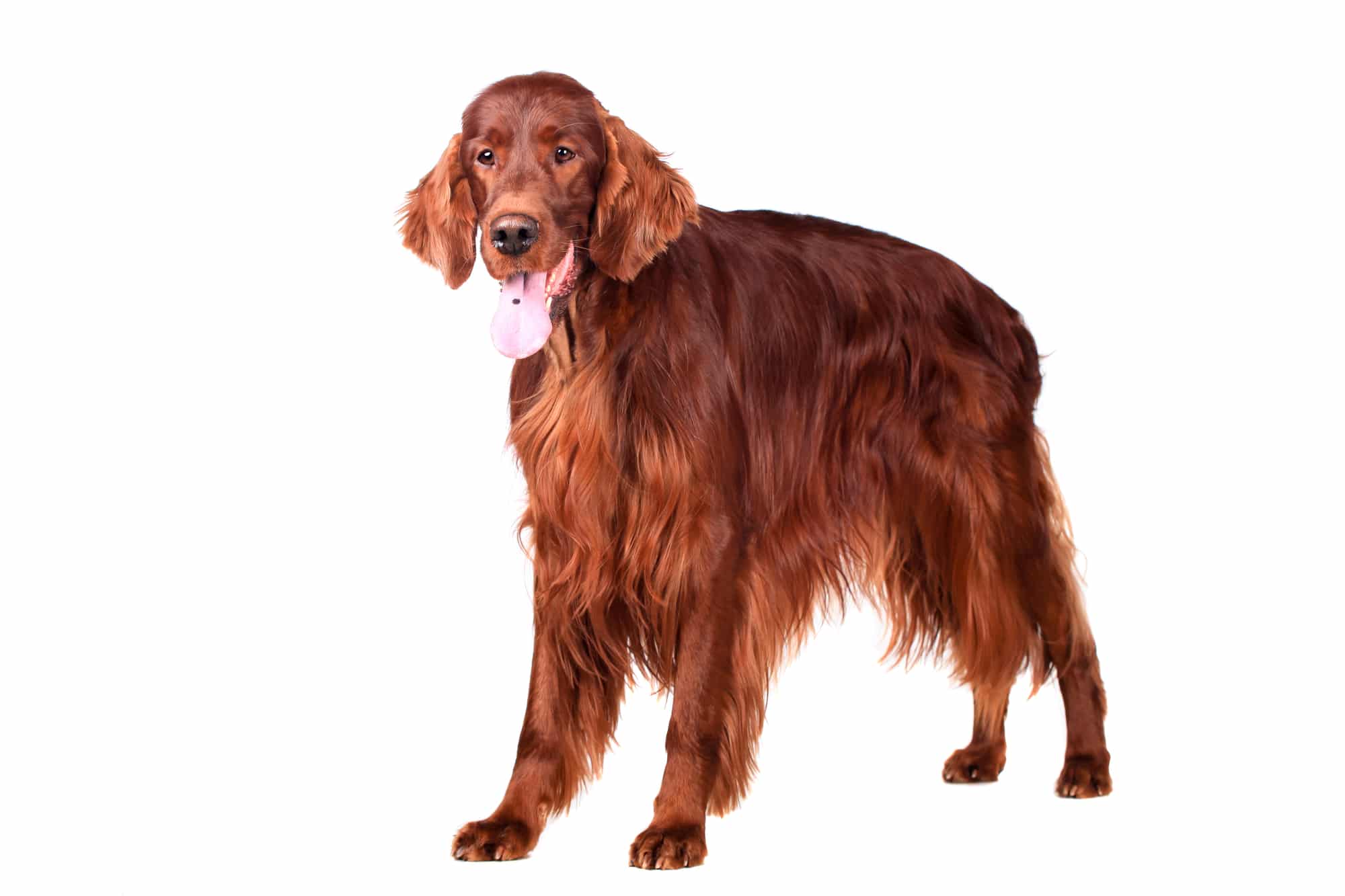Irish Wolfhound
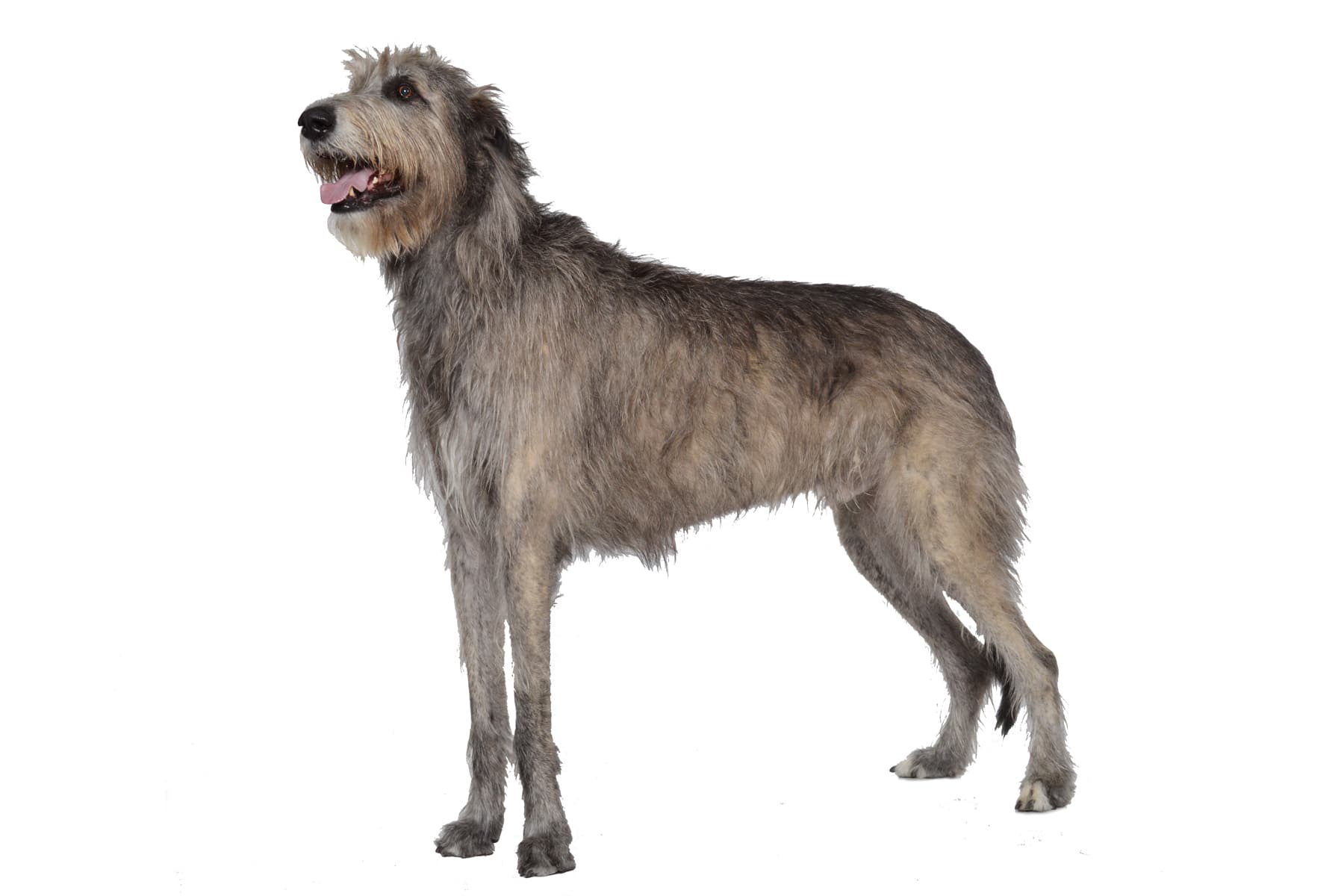
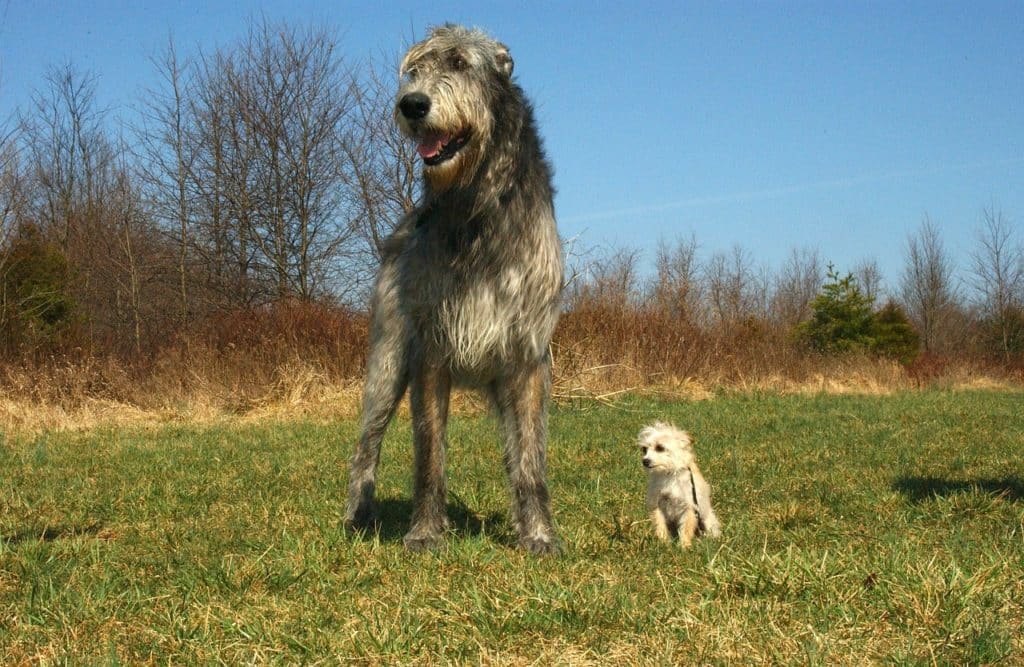
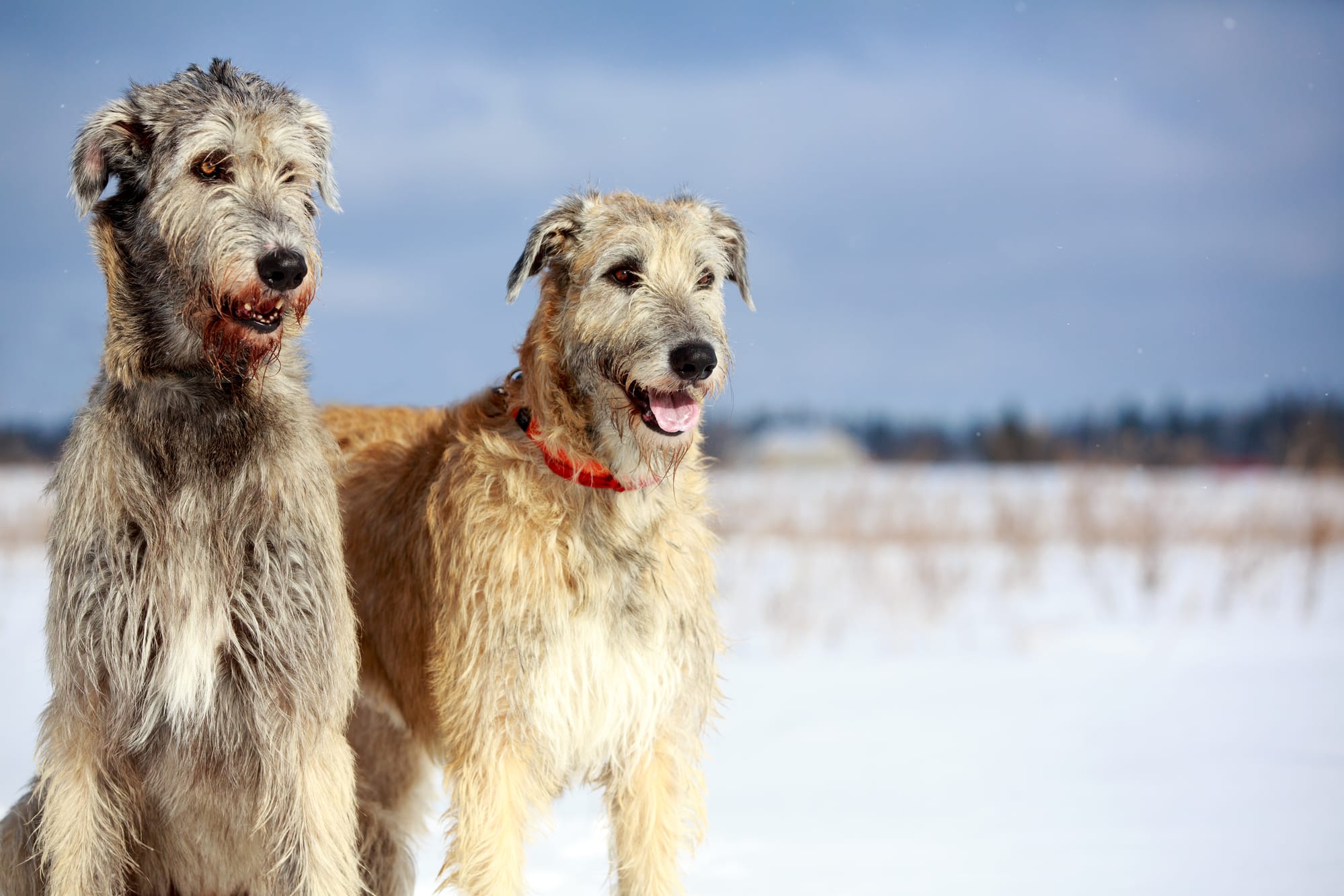
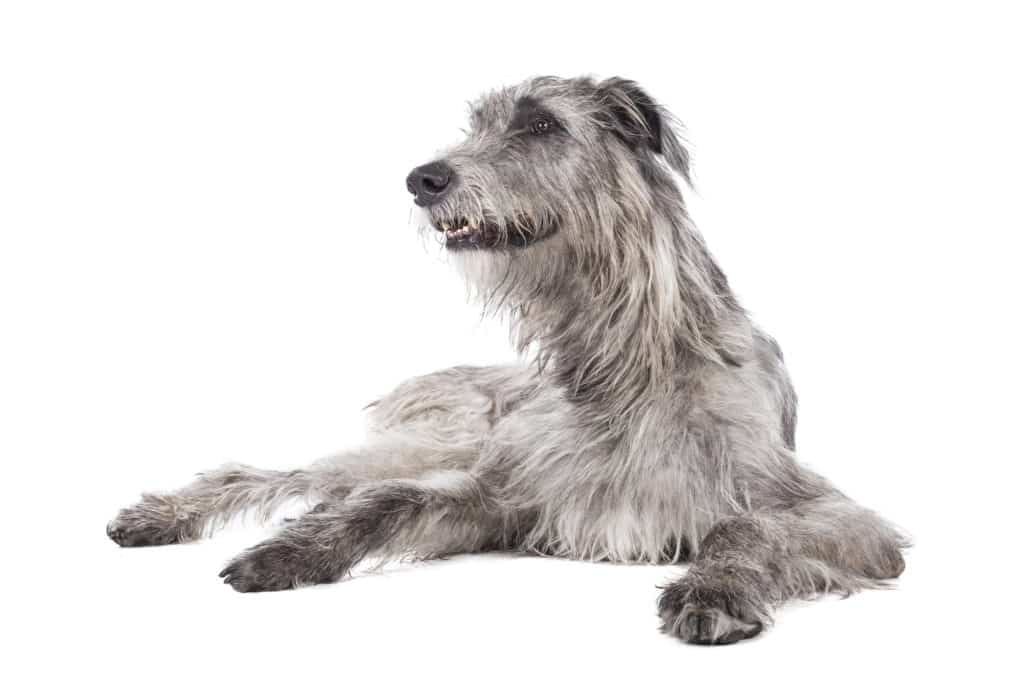
Temperament:
The Irish Wolfhound is one of the largest dog breeds in the world. In terms of size, these gentle giants are only surpassed by the Great Dane. Although its name suggests it, the Irish Wolfhound is not more closely related to the wolf than other dog breeds.
Characteristics
The Irish Wolfhound is a breed recognized by the FCI. It belongs to FCI Group 10, Section 2, Wirehaired Sighthounds.
The coat of the Irish Wolfhound is slightly longer, rough and hard. The coat color can be black, white, grey, red, fawn or brindle. According to the breed standard, the same colors are permitted in the Irish Wolfhound as in the Deerhound.
As befits a sighthound, Irish Wolfhounds have a lean but very firm and well-developed musculature. Nevertheless, they appear very petite for their size. Females reach a shoulder height of at least 71 cm, males over 79 cm. They reach a weight of approx. 40 to 55 kg.
Despite its impressive size, the Irish Wolfhound has a very gentle and calm nature. It is a very relaxed and calm dog that can hardly be disturbed. It is therefore also very suitable for families with children.
However, the Irish Wolfhound can also be very unpleasant if necessary. They are known for their loyalty and courage. These pedigree dogs are very vigilant and will not leave their owner's side. In an emergency, they will defend their owner. They are generally not aggressive, but are good at assessing a dangerous situation.
The Irish Wolfhound was used to hunt wolves in Ireland. Later, they were also used to hunt bears. They therefore have a lot of strength, energy and a strong hunting instinct. They need plenty of exercise every day. It is also best to give them the opportunity to do a few short sprints.
For a greyhound, running is a real basic need in order to keep him sufficiently active. However, it is not suitable for agility and dog sports with lots of jumping. Their size and weight would put too much strain on their joints and wear them out quickly. The Irish Wolfhound is very frugal and adaptable.
In principle, it could therefore also be kept in the city. Provided it has the opportunity to let off steam in a suitable place. It is only suitable for keeping indoors to a limited extent, as large animals need a lot of space. So if they are to live in an apartment, it must be large enough. A garden is an advantage for keeping an Irish Wolfhound, but is no substitute for extensive walking and running.
The Irish Wolfhound generally gets along well with other dogs of the same species. Due to its calm and good-natured nature, it rarely gets into fights with other dogs. Nevertheless, due to its size and strong hunting instinct, it should be socialized and accustomed to other dogs and animals at an early age. In this way, negative experiences in everyday life can be avoided.
Training must also be consistent with a dog of this size. As the owner, however, you should never be overly strict or harsh. Irish Wolfhounds are sensitive and at the same time very stubborn. Carrying out commands can take a little longer, as they first have to carefully check and weigh up their meaning. This requires a lot of patience on the part of the handler. However, once the Irish Wolfhound has built up trust and a strong bond, its loyalty is hard to beat.
Coat care:
Shedding:
Energy level:
Trainability:
Children suitable:
The right food
When choosing food, make sure that it contains high-quality ingredients, is balanced and meets your dog's requirements. Age, size or weight, activity and health status play an important role. You should follow the manufacturer's recommendations for the amount of food.
Treats should only be fed in moderation and deducted from the basic diet to avoid obesity.
Puppies can be fed 4-6 times a day. The number of meals should be gradually reduced to 2 per day until the dog is fully grown. A rest period should be observed after meals.
Fresh drinking water should be available at all times.
Health & Care
The Irish Wolfhound is a fairly low-maintenance and undemanding dog. The long coat should be brushed thoroughly once or twice a week. As with other dogs, eyes, ears and teeth should be checked regularly. If eyes and ears are dirty, they can be carefully wiped with a soft cloth.
Heat accumulates in the drooping ears of the Irish Wolfhound, which are usually tilted slightly backwards. As a result, more sebum builds up and dirt accumulates in the auricles and at the entrance to the ear canal. To prevent ear infections, you should therefore regularly ensure that the ears are clean. However, you should not go too deep into the ear, as you could otherwise injure the ear and the eardrum.
After a walk, especially if you have walked through tall grass or across fields, you should check the coat thoroughly for ticks. The long coat of the Irish Wolfhound offers many hiding places for the unwelcome parasites.
Large dog breeds such as the Irish Wolfhound should not climb stairs if possible. An apartment at ground level or an elevator is best. Otherwise they will have to be carried up the stairs, which can be problematic for a full-grown Irish Wolfhound. Climbing stairs is problematic as it puts strain on the joints and can promote diseases such as hip dysplasia and osteoarthritis.
Rest periods should be strictly adhered to with the Irish Wolfhound. Young dogs in particular are sometimes very exuberant and overestimate their strength. As the bones and joints are not yet so stable, the young dog must be protected from overloading.
The Irish Wolfhound has a very calm, almost stoic nature. That's why owners often don't realize that something is wrong until it's too late. This is because the dogs usually endure any pain without showing any signs of it. They put up with it until it is almost too late. This is why it is so important for owners of Irish Wolfhounds to keep a close eye on their dogs. Any change in weight, behavior or movement can be an indication that something is wrong.
Suitable accessories
The use of a suitable long-hair brush is recommended for grooming the long, wiry coat of the Irish Wolfhound. Mat removal combs, which remove the small tangles from the coat, are also suitable. Matted fur hinders the skin from breathing and is a breeding ground for germs and parasites.
Due to its size, a raised food bowl can be a sensible purchase. If the bowl is on the floor, large dogs have to bend down a long way to reach their food. If you get your Irish Wolfhound as a puppy, a height-adjustable bowl is a good idea. It can be adjusted to the size of the growing puppy.
Irish wolfhounds are not overly playful and, as sighthounds, are not very fixated on food. Nevertheless, they are happy to have a ball to chase after or a treat as a reward. A ball throwing machine for dogs is a great idea if you have a garden.
Other accessories that are part of every dog's basic equipment: collar or harness with lead, dog basket or dog mat as a retreat, tick tweezers, claw clippers, mild dog shampoo, toothbrush and toothpaste for dogs, transport box for transportation in the car and a first aid kit. Ask your vet what should be in the first aid kit.

Origin & History
The Irish Wolfhound is a very old breed. Little is known about its exact origins. Tradition suggests that the breed could have existed for more than 7000 years. Even in ancient Egypt, people are said to have kept very large sighthound-like dogs.
It is believed that they were brought to Ireland by the Celts in 3000 BC. Archaeologists have found the remains of very large greyhounds during excavations in England, Wales and Ireland. They could have been Irish Wolfhounds or at least one of their ancestors. Bone finds indicate that the animals had a shoulder height of 71 cm or more.
In ancient times and the Middle Ages, only nobles were allowed to keep Irish Wolfhounds. They were therefore a real status symbol. However, due to their size, strength and courage, the dogs were more than that for their owners. The Irish Wolfhound was often described as a loyal soldier or courageous warrior. The special character of the Irish Wolfhound is emphasized in many sagas and legends.
The Irish Wolfhound was an excellent hunting dog and very popular in its day. It was used to hunt big game such as bears, wolves and even moose. However, when firearms were invented, the Irish Wolfhound became less and less important as a hunting dog.
The breed was bred less and less, as it no longer served any purpose. The Irish Wolfhound was threatened with extinction. In the middle of the 17th century, it was forbidden by law to export the Irish Wolfhound from Ireland, as there were hardly any dogs of this breed left.
In the middle of the 19th century, the breed was finally revived in Ireland. To this end, the last wolfhounds were crossed with other breeds such as the Deerhound, Great Dane and Borzoi. The result of these breeding attempts is the Irish Wolfhound as it is officially recognized today. Compared to the original wolfhound, today's is somewhat stronger and larger.
